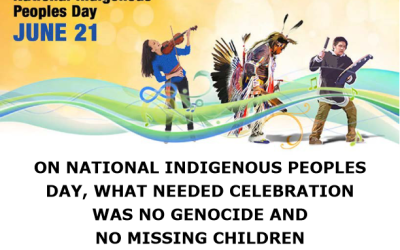
Two First Nations, one in Manitoba and one in Saskatchewan, are addressing the perennial problem of housing on Indian reserves in a unique manner.
Their solution abandons a time-worn practice — that membership in any one of Canada’s 633 Indian bands entitled you to a brand new house at no cost to you, like winning the lottery. Instead, they are moving to a form of individual responsibility for housing that includes down payments and monthly payments, a model closer to the standard for non-aboriginal Canadians.
The new regime is now in place on the Opaskwayak Cree Nation (OCN), located near The Pas, Manitoba. The Stanley Mission First Nation, located near the town of Laronge, Saskatchewan, has also implemented a similar program. The leadership on these reserves has come to realize that if the family is allowed to own the home they’re in, they will take better care of it. They also hope to cut the long waiting lists for new homes, which on most reserves contain hundreds of families.
Home construction, home renovations and the purchase of home appliances is one of the biggest budget-eaters on Indian reservations. The money bands receive from the federal government for that purpose has been inadequate with the result that two and as many as three families end up sharing a single home.
OCN’s housing manager, Silas Lathlin, explains that although his reserve receives funding for 10 homes each year, the amount received for each one is just under $30,000, far below the cost of building a new home. This is straining the ability of his department to deal not only with new housing requests but with the maintenance of existing units, not to mention associated costs like administration, insurance, audit fees, repairs and mortgage payments on CMHC units. Down payments and monthly payments from families with resources will significantly reduce that burden. Opaskwayak is facing 300 to 400 new home requests a year from band members. But the band was only able to build 288 new homes between the 1960s and the late 1980s. Recently, they have acquired mobile home units that can be purchased by band members or rented. Wage earners there are strongly encouraged to buy or build their own homes, laying to rest the old perception — still entrenched on most reserves — that the band is responsible for the provision of all housing. Not any more, says the OCN. Other chiefs and band councils may agree, but they might not want to risk losing an election over the issue.
Although financial necessity may drive such changes, they have another positive side effect. It informs the long debate about ownership of reserve housing. Traditionally, reserve communities hold title to all reserve lands and the buildings on it.
The perverse incentives created by the lack of personal ownership aside, the relationship has prevented band members from capitalizing those assets through business and personal loans. But how do you tell someone who paid for a dwelling that he or she doesn’t really own it? This strengthening of individual property rights will have both economic and political benefits. Lathlin indicated that his band will be developing land codes that suit the needs of outside lending institutions.
The old paradigm — where people expect their bands to buy almost everything for them — will still apply, of course, in situations where families cannot work and need the assistance. But if that is the exception, rather than the rule, the housing issue will be significantly depoliticized. On some reserves, the promise of housing is used to bribe people at election time, and some reserves have used their housing dollars for other political purposes. When one story broke in an aboriginal publication about how two of the largest reserves in Manitoba had lent their housing money to help another chief and council get re-elected, the silence in the aboriginal community was deafening.
Lathlin also believes that First Nations should combine their housing budgets and build their own units. This would cut costs and create much-needed employment.
The current system for housing upgrades is broken and neither tribal offices or Indian and Northern Affairs Canada seems capable of correcting it. The new model emerging at Opaswayak and the Stanley Mission is leading the way to a more responsible and productive First Nations housing policy.
This article originally appeared in the Winnipeg Free Press, March 10, 2005.


